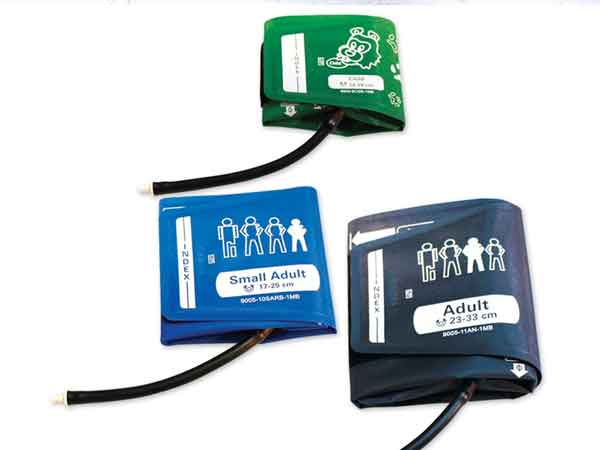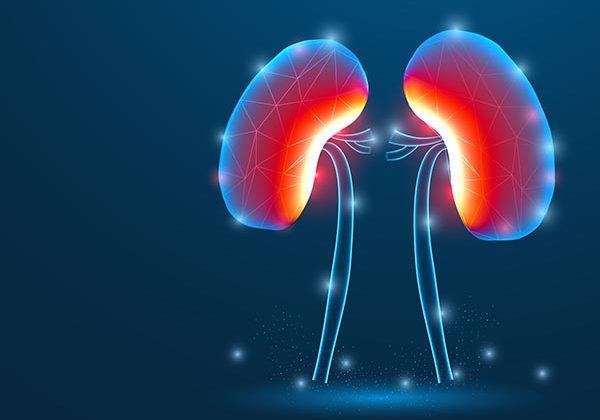Study finds blood pressure cuff size matters, affects blood pressure readings
Using a one cuff size-fits-all approach when measuring blood pressure may lead to striking inaccuracies in blood pressure measurement and diagnosis, according to preliminary research to be presented at the American Heart Association’s Epidemiology, Prevention, Lifestyle & Cardiometabolic Health Conference 2022.
“Accurate blood pressure measurement depends on proper patient preparation, positioning, measurement technique and individualized selection of cuff size, which should be based on the measured mid-arm circumference,” said study author Tammy M. Brady, M.D., Ph.D., vice chair for clinical research in pediatrics, associate professor of pediatrics in the division of pediatric nephrology and medical director of the Pediatric Hypertension Program at Johns Hopkins University in Baltimore. “While clinical practice guidelines highlight the importance of individualized blood pressure cuff selection for measuring blood pressure, most of the research looking at cuff size on measurement accuracy was done using mercury sphygmomanometers. We looked at how cuff size impacts blood pressure readings with today’s widely used automated blood pressure monitors.”
High blood pressure increases risks for heart disease, stroke, kidney disease, visual loss and more. It also causes death. In 2019, more than half a million people who died in the U.S. had high blood pressure as a primary or contributing cause of death.
Nearly half of adults in the U.S. have high blood pressure, defined by the 2017 American Heart Association/American College of Cardiology high blood pressure guidelines as systolic blood pressure equal to or greater than 130 mm Hg or a diastolic blood pressure equal to or greater than 80 mm Hg. However, many people don’t know they have high blood pressure. The best way to find out if an individual has high blood pressure is to get it checked.
In this study, researchers analyzed blood pressure readings of 165 community-dwelling adults (average age of 55 years, one-third were male and 68% were Black adults). During a single setting, researchers compared the average of three blood pressure readings using a regular, adult-sized cuff versus the average of three blood pressure readings obtained using a cuff appropriately sized for the individual. Before each set of three blood pressure measurements, study participants were asked to walk a similar distance from a waiting area to the blood pressure measurement station to eliminate the potential effect of a longer resting period on the results obtained during each of the sets of blood pressure measurements. Once participants were seated properly, blood pressure measurements were started 5 minutes after cuff placement. Participants had three sequential automated blood pressure measurements, 30 seconds apart. The participants did not speak during the measurements and refrained from using a smart phone, and the room was kept quiet.
Researchers found:
30% of study participants had systolic blood pressure equal to or higher than 130 mm Hg.
More than 40% of all participants had a body mass index of ≥30kg/m2, meeting the criteria for obesity.
Among the participants who required a small adult cuff (based on the measured mid-arm circumference), a regular-sized adult cuff resulted in notably lower blood pressure readings, including an average of 3.8 mm Hg lower systolic reading and 1.5 mm Hg lower diastolic reading.
In contrast, among those who required a large or extra-large adult cuff, a regular-sized cuff was associated with significantly higher readings, including an average 4.8 mm Hg and 19.7 mm Hg higher systolic reading, respectively.
“On average, individuals who required an extra-large cuff based on their measured mid-arm circumference had a blood pressure of 143.9/86.5 mm Hg when a regular adult cuff was used, which is a measurement in the range for a diagnosis of stage 2 hypertension. When using the appropriately sized cuff for the same participants, blood pressure readings were an average of 124.2/79.1 mm Hg, which is within the normal range,” Brady said. “In our study, the overestimation of blood pressure due to using a cuff that is too small misclassified 39% of participants as being hypertensive, while the underestimation of blood pressure due to using a cuff that is too large missed 22% of participants with hypertension.”
Based on these findings, individuals who require the large adult and extra-large adult cuff sizes may be most at risk for mismeasurement, misclassification and potential over-treatment in the clinical setting.
“It’s important for health care professionals and the public to recognize the importance of cuff size for the clinician’s office, kiosk and home blood pressure measurement. For example, cuff size may be even more important in communities with high prevalence of obesity, since large or extra-large cuff sizes may provide more accurate blood pressure readings in those individuals,” Brady said.
“The American Heart Association is collaborating with community health centers across the country on a new evidence-basednational hypertension control initiative to manage blood pressure and reduce poor health outcomes for disproportionately impacted racial and ethnic groups,” said Willie Lawrence, M.D., medical director for the Center for Better Health and Cardiovascular Wellness at Spectrum Health Lakeland in Benton Harbor, Michigan and chair of the American Heart Association’s National Hypertension Control Initiative Advisory Committee. “Ensuring proper blood pressure measurement, monitoring both at home and in a health care setting, and developing a plan with the patient for reduction in high blood pressure are important parts of the initiative and proven to manage blood pressure.”
A study limitation is this research was conducted in a primarily urban adult population with a limited number of participants. Future studies should examine the potential effects of mis-cuffing on other populations, including children and higher risk adult populations.
Source: American Heart Association
Full bibliographic information
One Size Does Not Fit All: Impact Of Using A Regular Cuff For All Blood Pressure Measurements
Authors:
Tammy M Brady, John Hopkins University, Baltimore, MD; Jeanne Charleston, Johns Hopkins Univ ProHealth, Baltimore, MD; Junichi Ishigami, Johns Hopkins Univ, Baltimore, MD; Gregory P Prokopowicz, Johns Hopkins Hospital, Baltimore, MD; Edgar R Miller II, Johns Hopkins Medical Institutions, Baltimore, MD; Kunihiro Matsushita, JOHN HOPKINS UNIVERSITY, Baltimore, MD; Lawrence J Appel, Johns Hopkins Medical Institutions, Baltimore, MD





